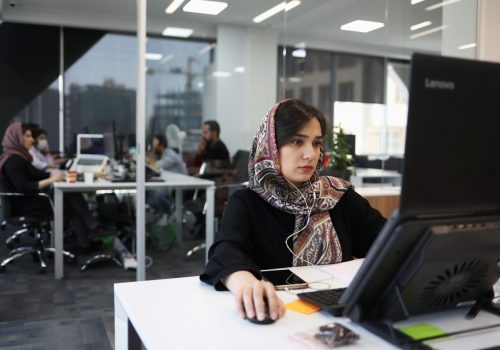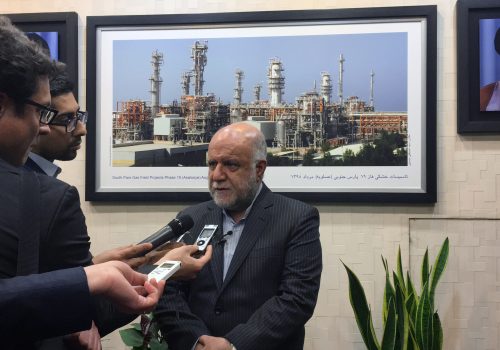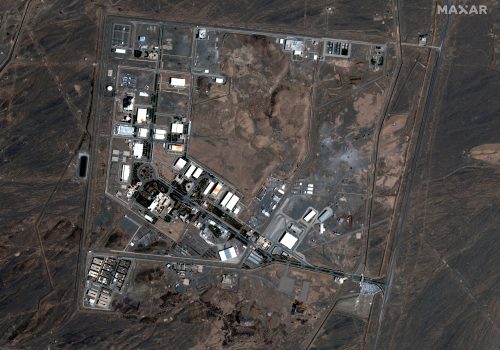Booming stock market in Iran is a national security project
On June 28, President Hassan Rouhani, referring to US sanctions and the coronavirus outbreak, explained the state of the Iranian economy in simple words: “The economic pressure began in 2018 and today we are facing the most immense economic pressure.” On July 8, Health Minister Saeed Namaki provided a clearer picture. The reopening of the economy “was not over our ignorance [of the virus’s danger]. It was due to us being on our knees against an economy that could take no more,” Namaki said on state television.
In the last two weeks, Iran’s currency, the rial, has plunged to a historic low against the US dollar. Both Rouhani and the head of the Central Bank of Iran (CBI), Abdolnaser Hemmati, attributed the fall to the psychological impact of the June 19 International Atomic Energy Agency (IAEA) board of governors passing a resolution critical of Iran.
These statements mask the reality that the rial’s loss of value is a trend and has not been caused by a single incident. The rial was exchanged at 111,000 rial to the dollar last August. Since then, the value of the battered currency has dropped by half, exchanging at 223,000 rials to the dollar as of July 27. According to Hemmati, the rial has fallen 3,500-fold since the pre-1979 era.
The fall of the rial against the dollar affects the livelihood and lives of Iranians, especially low-income families. Vahid Shaghaghi, a reputable Iranian economist, says, “One of the biggest problems of Iran’s economy is that. . . almost every single consumer good is somehow linked to [the rate of] the dollar.”
There are two primary reasons behind the devaluation of Iran’s national currency and the state of its economy as a whole.
The first is mismanagement at the macro level. As an example of the decision-making process, on July 5, Valiollah Seif, the former CBI Governor, described how the government decided to make an exchange rate above 42,000 rials illegal while the dollar was exchanging at 60,000 rials in April 2018. The story sounds surreal.
Seif describes a scene where he, Rouhani, and First Vice President Eshaq Jahangiri, are negotiating back and forth about the exchange rate, when Rouhani finally says, “It shouldn’t go above [42,000 rials to the dollar] at all!” Seif says that the decision “was a strategic mistake by the government.” While Iran faced a severe shortage of foreign currency reserves, the 42,000 rials to the dollar were looted by importers who had government connections. On June 20, 2018, Alireza Salimi, a member of Majlis, said, “They give [42,000 rials to the dollar] to some special individuals to import goods and sell them at [80,000 rials to the dollar].” Billions of dollars of economic rent were created without an increase in the productivity of the domestic economy or any positive contribution to society.
The second reason has to do with the constant conflict with the United States since the establishment of the Islamic Republic, which has resulted in an array of sanctions-related hinderances among those foreign investment due to fears of secondary sanctions. The Iranian deep state continually argues that the US-Iran conflict is “fundamental, ideological, existential and cannot be resolved through negotiations.” Supreme Leader Ayatollah Ali Khamenei has repeatedly taken the same stance, vehemently supporting a “no talks, no détente” policy toward the US.
To tame the open forex market and confront the new wave of rial devaluation, the CBI—sometimes referred to as the “market maker”—injected $500 million, and another $300 million through Forex Management Integrated System (NIMA) to no avail. The government, experiencing a decrease in foreign currency revenues and an inability to transfer forex—generated from non-oil export earnings inside the country—because of US sanctions, stopped allocating foreign currency at the subsidized rate of 42,000 rials per dollar for importing rice and grains. Reports maintain that there has been an “explosive increase” in the prices of those items, which are central to the diet of many Iranians.
Based on a report by the Majlis Research Center, 2.8 to 6.4 million Iranians may lose their jobs as a result of the pandemic. Given that the active population of the country is 23.4 million, only seventeen to twenty one million people out of a population of eighty-four million will have jobs at the end of this Iranian calendar year (March 2021).
Against this gloomy backdrop, something bizarre is happening. The benchmark Tehran Stock Market index (TEDPIX) is booming. It has surged seven-fold during the past year. In the spring of this year stock prices increased 1.6 percent per day on average. One may ask how that might help the Iranian population?
In April, the ban on trading Justice Shares (Saham-e Edalat) was removed. These are shares of a basket of forty-nine state-owned companies, including petrochemicals, that are the driving force of the stock market. The shares were given to the six lowest income deciles fifteen years ago.
The shares are in the hands of forty-six million people. As of July 10, the value of Justice Shares has experienced a thirty-fold increase, on average, since the plan was launched. In total, forty-eight million people have registered to buy and sell stocks. Excitement about the bourse has engulfed the whole country. In such circumstances, the bourse works as a savior for the government, which watches the stock market closely as a national security priority.
Rouhani and his administration’s relentless support of the bourse are playing a major role in heating up the stock market. He says the “biggest responsibility” of the Economics Ministry is the “protection and reinforcement of the bourse.” Rouhani argues that “the bourse is a point of hope in this special economic condition of the country.” He adds, “[protecting] the bourse is the number one economic priority.”
Since Rouhani took office, the domestic money supply has more than quadrupled. The amount of money flooding into the stock market is massive while the herding phenomenon has taken over the bourse.
The situation in Iran is grim. The health minister, who is in charge of fighting the coronavirus crisis, said, on July 8, ”We receive reports from security forces. . . The fact that [people], due to poverty and privation, are heading for a revolt, is serious. The president and security forces have to think about the livelihood of the people and prevention of revolt.”
While trying to control millions facing extreme financial hardship, the government argues that the liquidity flowing into the stock market is directed toward domestic production activities, not unproductive markets such as foreign currency which triggers inflation. Meanwhile, the government has now sped up the offering of more shares of state-owned companies in the heated stock market in the hope of countering its huge budget deficit.
On July 27, TEDPIX closed at 1,933,943. But there is a vital question that needs to be answered: will this trend continue or will the bubble burst—and what are the consequences if it bursts?
Shahir Shahidsaless is an Iranian-Canadian political analyst and freelance journalist. He is the co-author of Iran and the United States: An Insider’s View on the Failed Past and the Road to Peace. He is a contributor to several websites with focus on the Middle East as well as the Huffington Post. He also regularly writes for BBC Persian. Follow him on Twitter: @SShahidsaless.
Image: Stock market employees work at Tehran's Stock Exchange via REUTERS.


